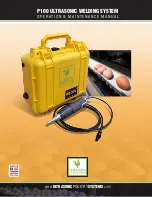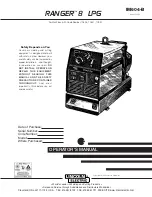
2
37.5
31
184
45
82
196
31
17
.5
45
184
196
82
31
17
.5
Fig3
80
°
Fig4
Fig5
90°
90
°
Fixing in figure 1
¾
With the aid of the template mark out the fixing positions. Align the
hinge point of the template with the centre line of the hinge on the
door. (This applies to both left and right-hand doors.) There are two
holes to be drilled/tapped on the transom for the arm shoe and four
holes to be drilled/tapped on the door leaf for the closer body. If the
template is not used refer to fixing dimensions (see figure 1 and 2
above.)
¾
Secure closer body with screws provided, making sure that the
spindle is positioned towards the hinge side. (See figure 1 and 2
above.)
¾
Secure the arm to the spindle using M6 bolt supplied. Locate arm
at approx. 80° with respect to the door leaf, towards the hinge point.
(See figure 3.) Fix the shoe to the transom using the screws
provided and loosen 10mm locking bolt on arm. Prime the closer
slightly by rotating the
primary
arm to approx. 90° with respect to
the door leaf and tighten the locking bolt. (See figure 4.)
¾
The latch action of the
TS1000C
can now be adjusted using the
adjustment valve located on the side (see figure a) of the body of the
closer next to the closing speed adjustment valve. Clockwise will
decrease the latch action and anticlockwise will increase the latch
action.
Do not overtighten
.
¾
The closing speed can now be adjusted using the adjustment valve
located on the side (see figure a) of the body of the closer.
Clockwise will decrease the closing speed and anticlockwise will
increase the closing speed.
Do not overtighten
.
¾
Test installation by simulating persons using the entrance. The
door should close smoothly without slamming and present no
potential hazard to traffic.
¾
When commissioning is complete push on the, black plastic,
spindle cover cap and clip on front cover.





















